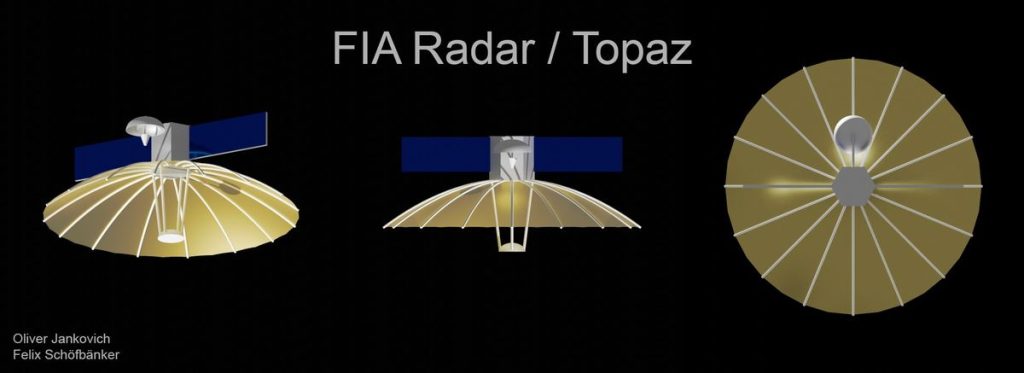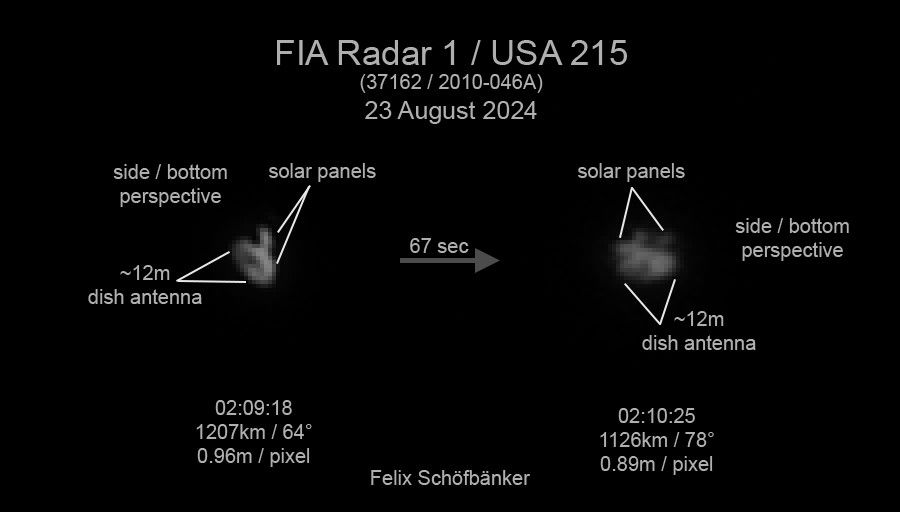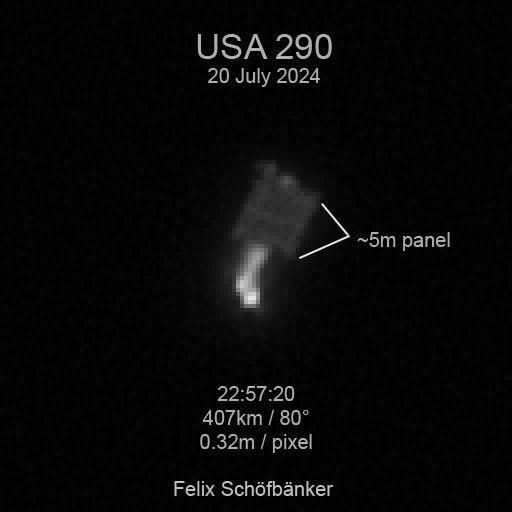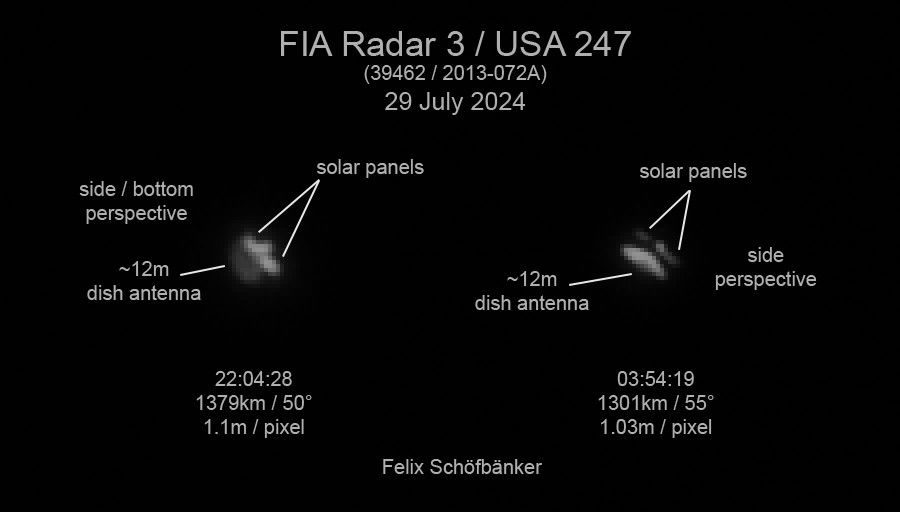#^Amateur Astrophotographer Cought Secret US Spy Satellites on CameraAn amateur astronomer from Upper Austria, Felix Schöfbänker, claims he has captured rare images of top-secret US satellites and revealed their structure and behaviour. Using his home telescope, he could see details of the FIA (Topaz) and KH-11 satellites used for espionage and intelligence gathering.
Watching The Watchers
Among the many artificial satellites orbiting the Earth, some are used for
military purposes.
Intelligence Satellites (spy satellites) are generally shrouded in mystery and secrecy. Details about their tasks, devices, and appearance can rarely be found on the websites of developers or operators.
However, some amateur astrophotographers like photographing these satellites as a hobby, including Felix Schöfbänker from Austria.
FIA (Topaz): The All-seeing Eye In Orbit

This approximate model was created by fellow satellite enthusiast Oliver Jankovich based on Schöfbänker’s interpretation of collected images. Credit: Felix Schöfbänker
The astronomer’s images include US reconnaissance satellites launched by the NRO, particularly a new generation of radar imaging satellites called FIA-Radars.
Future Imaging Architecture (FIA-Radars), or Topaz, are five Boeing vehicles. The first satellite was launched in 2010.
These spacecraft have powerful synthetic aperture radar (SAR) that can ‘see’ through clouds, leaves, and even shallow soil. They can provide high-definition images of targets on the ground 24 hours daily.
Schöfbänker identified these satellites’ 12-metre parabolic mesh antennas and 10-metre solar panels and some of their design features.
‘The satellite is equipped with solar panels, and we can see another bright object between the solar panels, which we interpret as an uplink and downlink antenna. It could be something else,’ he said. According to Schöfbenker, the satellite can send many pulses, receive the returned signal and convert the signal into an image.
During his 28 observations, he noted that the SAR satellite’s antenna seemed to be leaning in one direction, saying: ‘Only six times did the antenna face to the left side and 22 times to the right.’
KH-11: Real-time Reconnaissance

“KH-11 Kennen” electro-optical satellites are somewhat similar to the Hubble Space Telescope, but optimised to look down at Earth. Credit: Felix Schöfbänker
Other objects that came into the amateur astronomer’s eye were the electro-optical satellites,
KH-11 Kennen.
He estimates that the latest KH-11s, such as USA 186 and USA 314, have mirrors up to 3 metres wide, increasing their ability to capture high-resolution images.
The KH-11 (Keyhole-11) series reconnaissance satellites, known by the code name Kennen, are the first U.S. spy satellites to use electro-optical digital imaging and provide real-time optical surveillance.

An animation of a satellite designated USA 215, believed to be FIA Radar 1, taken by Felix Schöfbänker. Credit: Felix Schöfbänker
They have been in orbit since 1976 and replaced earlier film-type satellites of the KH-8 Gambit-3 and KH-9 Hexagon series.
These instruments are similar in design to the Hubble Space Telescope. Still, instead of exploring deep space, they are focused on our planet and provide continuous observation of objects on Earth.
These satellites, developed by Lockheed Martin, can gather intelligence information in real-time and identify objects as small as three inches.
The KH-11 was the first vehicle to provide real-time intelligence to officials, which proved critical during events such as the Cuban Missile Crisis and the Six-Day War.
The Mysterious USA 290

Unknown type of spacecraft. Perhaps another KH-11 of a different design. Credit: Felix Schöfbänker
However, the most exciting object discovered and identified by Schöfbenker may be a satellite that may be part of a secret programme other than conventional optical reconnaissance.
He speculated that it could be USA 290 or another KH-11 with a different design and orbit from the usual one.
Images of this object show a rectangular panel about 5 metres long, contrasting with the more cylindrical design of the KH-11 series of vehicles.
According to Schöfbenker, it could be a radiator to cool the infrared imaging system or a phased antenna array designed for signal reconnaissance. It is unlikely to be a solar panel as it appears stationary, making it difficult to track the sun for power generation.
USA 290’s unique design and orbital characteristics are still a mystery, leading to speculation about its purpose.
The Significance Of The Discoveries

Photographs of a satellite designated USA 247, believed to be FIA Radar 3, taken by Felix Schöfbänker. Credit: Felix Schöfbänker
‘My images have revealed several things that were either unknown or only assumed previously,’ says Schöfbenker.
He dismisses fears about the disclosure of sensitive information because of his observations. ‘Most countries have much better technology,’ he said, adding that amateur photographs are unlikely to cause alarm.
More of Schöfbenker’s satellite images are available on
his profile on the Astrobin astrophotography website.
The post
Amateur Astrophotographer Cought Secret US Spy Satellites on Camera appeared first on
Orbital Today.